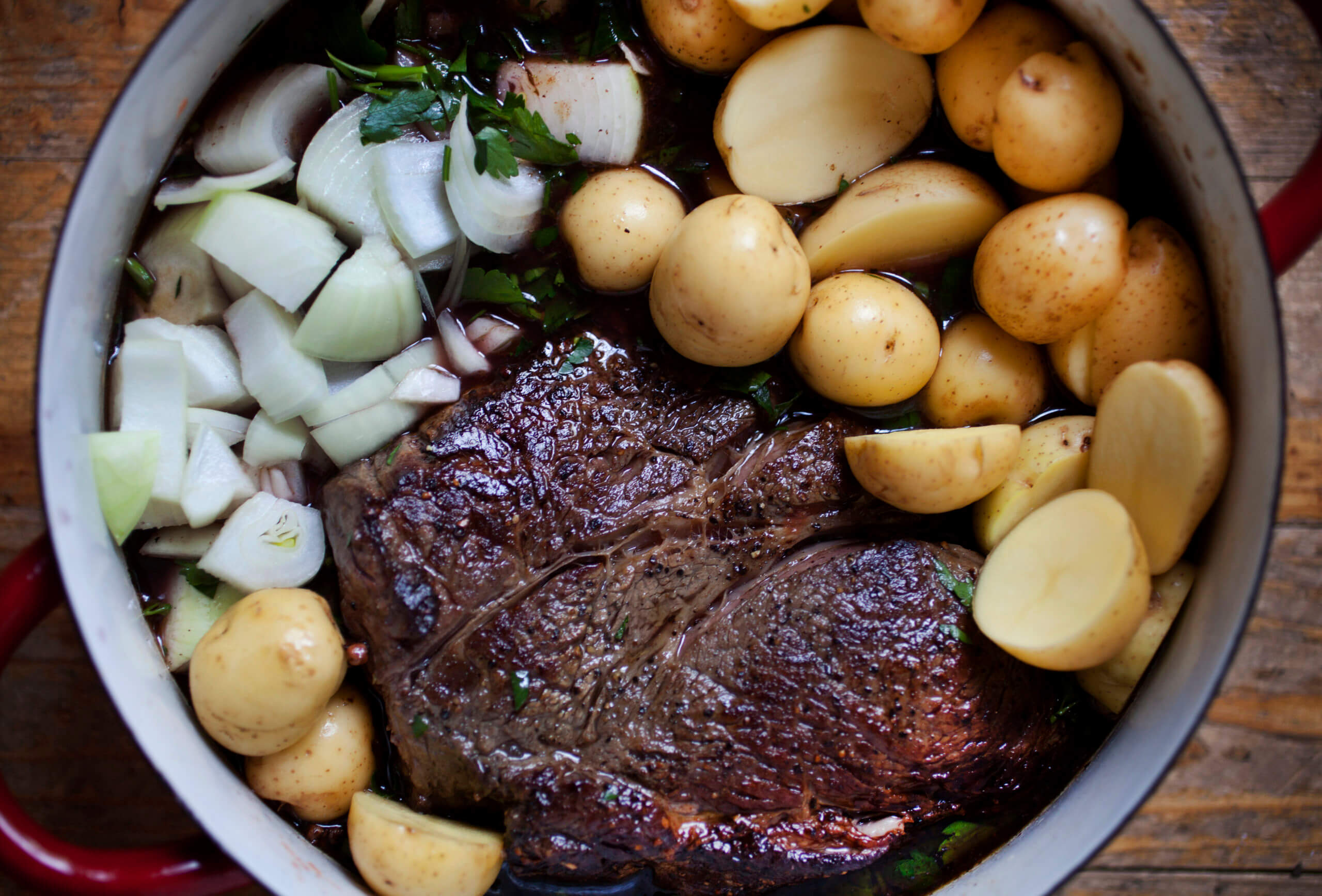Technique Tuesday – Braise, Debone and Simmer
It’s Tuesday, and as such we love to take this day in particular to focus on core cooking and baking terms — #TechniqueTuesday. This is the 4th in our series and today, well, we’re making a pot roast…sort of. The techniques we’re highlighting today, are all part of – or can be part of – creating a great pot roast dinner at home. Today’s terms are Braise, Debone and Simmer. Now, let’s get started.
Braise
Braising is a term that culinary students and chefs are familiar with, but home cooks might not be. However, if we use a similar term, such as pot roast, it may ring a bell for most. Braise is a French term that is a combination cooking method using wet and dry heat sources. Simply put, it means to slow cook something in liquid. Do you see where this is going?
This method relies on heat and moisture to break down what is typically an inexpensive cut of meat, like chuck roast, which is the predominant protein used in making a pot roast. Pressure cooking–like popular Instant Pots–and slow cooking (crockpots) employ braising; likely more familiar terms to home cooks.
Debone
Typically a chuck roast, which we’re using in our virtual kitchen today, will have a bone in it, as it comes from the shoulder area of the cow. Many cooks like to leave the bone in when braising meat, as it adds extra flavor. The moisture breaks down and tenderizes the meat. However, you can remove the bone if you wish…and this process is called ‘deboning’.
There are definite benefits to deboning meat at home or in a professional kitchen, and not just a beef roast. Deboning also applies to various other types of meat, including chicken.
- Budgetary Needs – Buying meat with the bone in is usually less expensive than those fully butchered. Take for example boneless (and often skinless) chicken breasts. Both home cooks and chefs pay a premium for boneless cuts of meat.
- Speed of Cooking – Deboning a cut of meat speeds up the cooking process as bones impact heat distribution.
- Carving the Meat – It’s much easier to carve and serve a boneless piece of meat.
- Skills Practice – Deboning allows chefs, and home cooks alike, to practice and advance this skill.
While the meat is the main attraction for our classic pot roast dinner, it isn’t the only food made for braising. Vegetables, particularly those with high water content, are perfect for this cooking method, which is why many add onions, potatoes, carrots and even celery to their pot roast recipes.
The first step to preparing our pot roast in the braising process is searing the surface of the roast, which enhances the dish’s flavor. The meat doesn’t produce enough liquid on its own during the searing process, so additional liquid can be added – at times this can include vinegar, wine, beer, stock, and even tomatoes for an acidic element.
Simmer
When the pot roast is seared and the desired vegetables are prepared, they’re then simmered until the meat is so tender that it separates with a fork. Simmering is the type of cooking temperature used in braising. The liquid added to the pot cooks at a temperature that is just below boiling but above poaching. Pressure cookers and slow cookers cook by simmering automatically. However, if you are cooking on a stove the way to identify a simmer is when the liquid is moving but not as quickly as a boil and isn’t producing as much steam as boiling. As a part of braising, simmering helps cook the ingredients slower, developing a deep, rich flavor.
When the meat is done, the remaining liquid is oftentimes turned into an accompanying sauce or gravy by adding a few ingredients such as flour, butter, heavy cream, or cornstarch. Many however, love the au jus consistency, as it allows the main ingredients of the dish to shine.
Some other classic dishes that use the braising technique, and may or may not require deboning, are beef brisket, coq au vin, and chicken cacciatore.
To familiarize yourself and practice the techniques mentioned here, check out some of our online cooking classes like Buying Meat and Basic Home Butchery, Perfect Pot Roasting and Slow Cooker Revolution.
If you missed any of the other Technique Tuesday articles you can catch up here:


